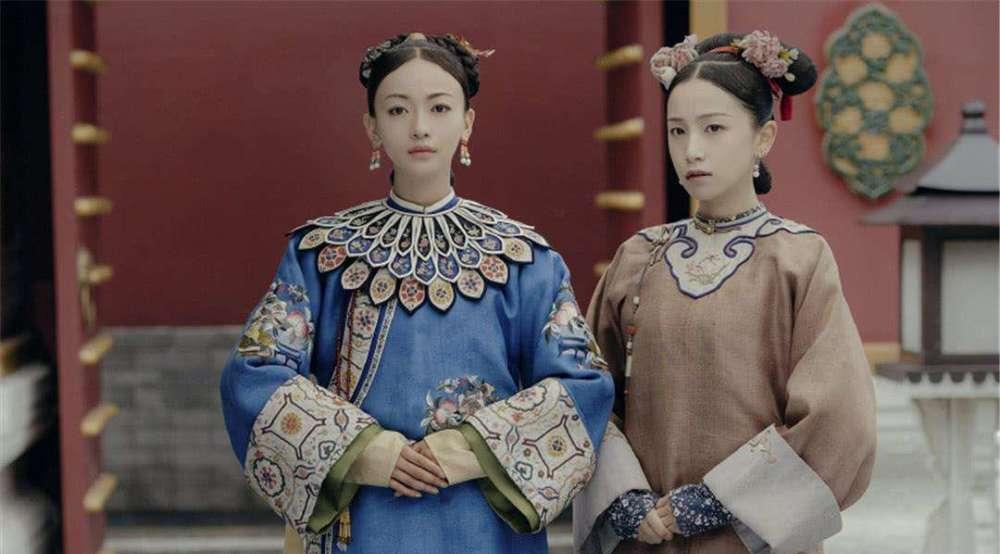Stylistically, Jiaqing was a very different emperor than his father Qianlong, who was more low-key and pragmatic, although slightly mediocre, but a benevolent monarch, so the temple name after his death was Qing Renzong. Today I want to talk about the jiaqing family of those things, before Jiaqing succeeded to the throne, Qianlong had assigned her three Fujin, in addition to the original empress Xiaoshurui and the side Fujin filial piety and rui empress, there is also a side Fujin, she is the concubine.

As early as the thirty-ninth year of Qianlong, Qianlong held a wedding ceremony for his personally selected heir, the fifteenth brother Yongyan, who was from the Xitara clan of Manchuria's Zhengbai Banner, later Empress Xiaoshurui. Although this Hitara clan was once born in baoyi, her ancestors have a deep relationship with the Aishin Kyora royal family, and Empress Xianzuxuan, the mother of Taizu Nurhaci, is from this family, and from this point of view, the Kitara clan can be described as a red miaozheng.
After marrying Jiaqing, the Hitara clan was very favored and gave birth to three children, including the later Daoguang Emperor, the second son of the emperor Mianning. However, in the fifty years of Qianlong, the Hitara clan experienced a small birth, and this small birth caused the physical condition of the Hitara clan to plummet, so Qianlong planned to select a side Fujin for his son Jiaqing.
During the Qing Dynasty, there were two main sources of the prince's side Fujin, the first was the handmaiden given by the emperor to the prince, who was accepted as a concubine and gave birth to children, and was given the title of side Fujin, which was generally a clothed woman from the Three Banners of the Ministry of Internal Affairs, with a relatively low family lineage.
The second is that the emperor selects a flag girl in the Eight Banners of the Manchu And Mongolian Han Dynasty and points out to the prince as a side Fujin, which is generally from the Eight Banners family with a strong family background, and the concubine we are talking about belongs to this kind.
Concubine Shu is from the Eastern Gui clan of the Completed Yan clan Manchurian red flag Sushan branch, and has a relationship with the Royal Family of the Jin Dynasty, the ancestor of the flag is named Su Shan, at the beginning of the Qing Dynasty led the clan to return, and was awarded the shiguan Zuo collar, this branch of the Completed Yan clan has been holding high-level official positions in the dynasty, so from the point of view of birth, this concubine is impeccable.
Concubine Shu's father, named Ha Feng'a, not only inherited the family's third-class light vehicle lieutenant's title, but also served as a staff general in Shanxi, and Ha Feng'a was later used heavily during the Jiaqing period, probably because of his daughter Shu Fei. Hafong'a had a sister who married The Prince of Zhuang, Yong Yao, as Concubine Fujin, and Concubine Shu also had a sister (Ha Feng'a's daughter) who married Yong Ying's stepson Mianjie as Concubine Fujin, and the family married the Iron Hat King as Concubine Fujin for two consecutive generations, which to some extent reflected the prominence of the Yan clan.
Fifty-one years after Jiaqing, Concubine Shu participated in the Eight Banners Draft that year, and was favored by Qianlong, pointing out Yongyan (Jiaqing) as a side Fujin, when Yongyan Concubine Fujin Xi Tara's body had already had problems, so it was very likely that Concubine Shu was the empress candidate prepared by Qianlong for her son Yongyan, and from this point of view, Concubine Shu was undoubtedly a lucky woman.
However, what is unexpected is that Concubine Shu died shortly after marrying Yongyan, and did not even leave a man and a half woman, in this case, Qianlong could only designate Yongyan as a side Fujin again, which led to the later Empress Xiaoherui.
After Jiaqing succeeded to the throne, he did not forget his early lateral Fujin, and ordered him to be posthumously honored as a concubine. Since the Changling Tomb in Jiaqing had not yet been built at that time, the golden coffin of Concubine Shu could only be temporarily stored in the funeral palace until the eighth year of Jiaqing, and the Concubine Shu, who had been dead for 14 years, was buried in the Changling Concubine Yamen (Changling Concubine Garden Bed).
We can think of the later Empress Xiaoherui, who not only served as an empress for nearly twenty years, but also served on the throne of the empress dowager for thirty years, sitting in the harem of the Qing Dynasty for more than 50 years, which can be said to be a very blessed woman. If Concubine Shu was in good health and did not die early, Empress Xiaoherui's life path would belong to Concubine Shu, but unfortunately, there is no if in life, everything is predestined.
References: Draft History of the Qing Dynasty, Records of Emperor Renzong of the Qing Dynasty, Four Genealogies of the Qing Imperial Family